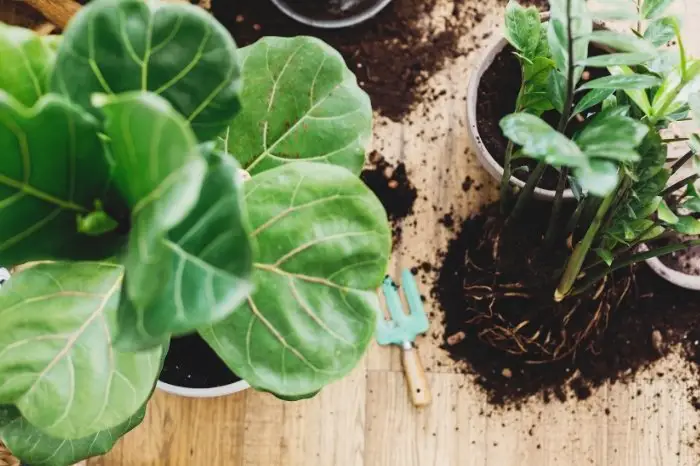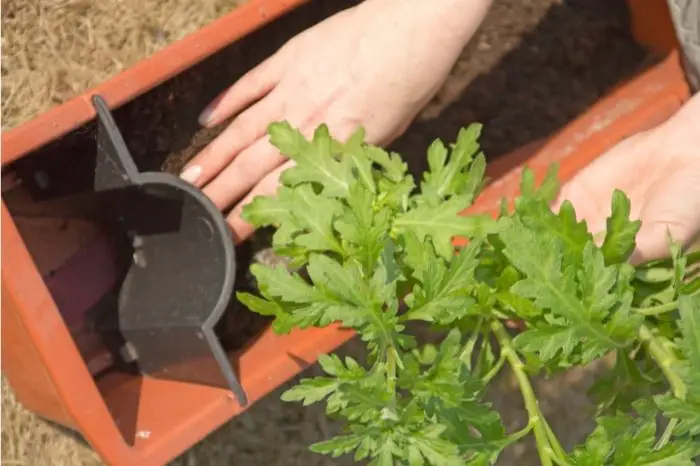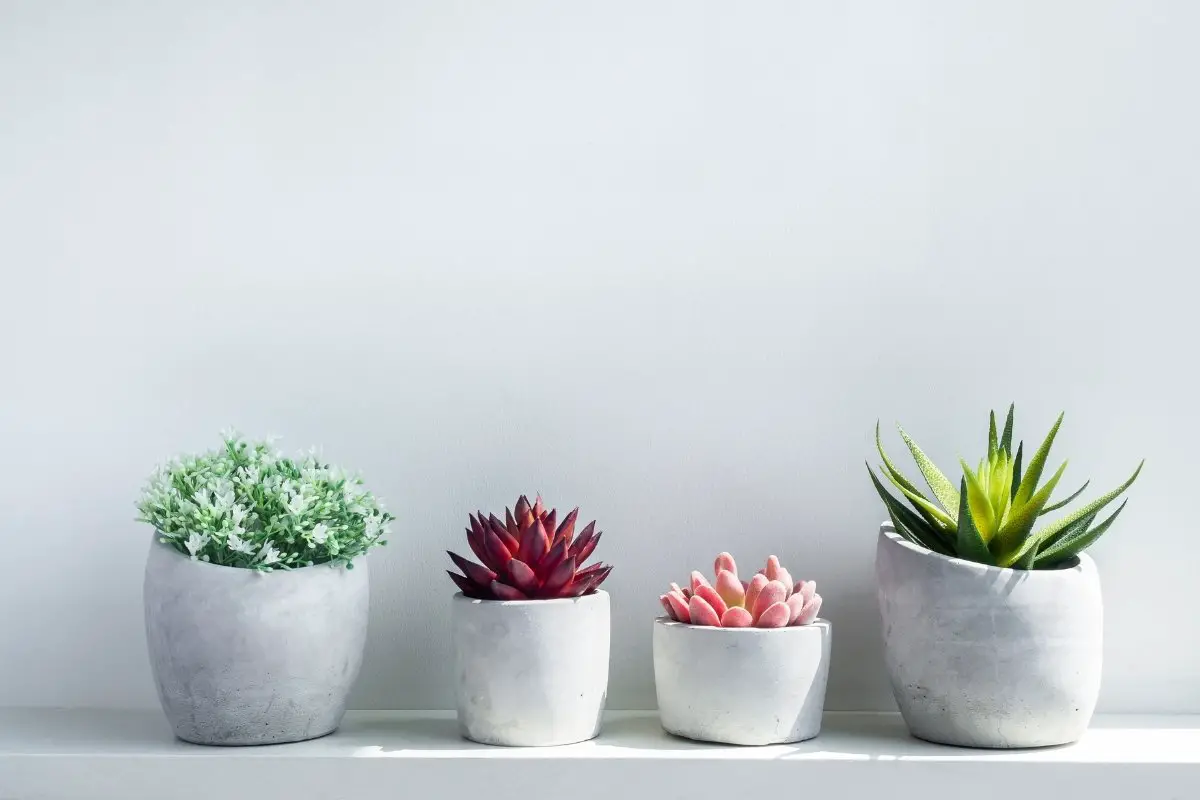Last Updated on January 5, 2023 by Tony Manhart
Indoor self watering planter can be of great benefit to your indoor houseplants. This is because our indoor house plants usually depend on the caregiver to supply things like water, light, nutrients, and so on.
Different indoor plants have their watering needs. Some indoor plants may require watering every few days, and then others can even go a week or two without needing water. You will mostly need to plan and set aside some of your time to water these indoor plants.
But with the help of an indoor self watering planter, the job of manually watering your plants may just be a stress-free and comfortable thing to do. Indoor self watering planter can help you water your plants automatically and keep your plant refreshed and healthy.
If self watering planter is new to you and you wish to get some info about it, then we’ve got you covered here. Now, let’s look into how this indoor self watering planter can be of great use to your houseplants and the great work they do.
Indoor Self Watering Planter
Indoor self watering planter is a pot or a container that can help water your indoor plants automatically. It is also known as a self watering pot.
This indoor self watering planter can help supply the right amount of water to your plant so it can save your plants from drying. It will also ensure your plants aren’t overwatered.
All you need do is always remember to refill the reservoir every 2 to 4 weeks then you can relax and watch your plant grow healthily with a proper supply of water.
6/4.1/3.2 Inch Self Watering Planter Pots, Self Aerating, High Drainage, Deep Reservoir(Gray)
So, if you’re that busy gardener or you don’t want to forget watering your plants, then a self watering planter can go a long way.
Indoor self watering planter is great to be used for most indoor plants such as vegetables, tropical plants, and even annual and perennial plants.
Learn more about the 3 Best Plant Watering App For You iOS/Android
How Does Indoor Self Watering Planter Works?
As we have mentioned, this indoor self watering planter is a pot or container but it is not just an ordinary pot.
The main pot or container you use for your main plant is the traditional pot you use in housing the soil and houseplant. Then there is the bottom reservoir which is known as the outer pot or water storage tank that keeps or stores extra water.
The water storage tank needs to be filled and that is about what you will be doing. So, around 2 to 4 weeks is usually when you will need to refill the tank. But you can always check the reservoir probably every week. So, you see all you need to do is pretty easy and won’t take your time or stress you.
Another part that is essential in the self watering planter is the wick. This wick is to connect the outer and inner pot for water to move or travel up to the root ball of the plant and supply water to the plant.
Learn more about How Long Can Hydroseed Go Without Water?
More Benefits Of Using An Indoor Self Watering Planter
Indoor gardening life can be made much easier with the help of an indoor self watering planter to help water our indoor plants. Here are more benefits your indoor plants stands to gain using a self watering planter.
1. Water Is Utilized Efficiently
Indoor self watering planter can help prevent water wastage by efficiently utilizing the appropriate amount of water for your houseplants.
You may even go for self watering planter that features a moisture-wicking system and this makes them more efficient.
Once the chamber is filled with water, moisture is absorbed by the moisture-wicking system, and the water is sent back to the plant as water. So, this implies that the same water can time and time again.
2. The Moisture Level Is Evened Up
Unlike when you traditionally water your plant from the top downwards, the plants from self watering planter absorb water from the bottom then move to the top.
So, this flow of water this way ensures that water is delivered evenly and the moisture reaches the appropriate indoor plant root.

3. Root Rot Is Prevented By An Overflow Hole
Houseplants such as jade plants, spider plants, and English ivy can still tolerate water growing in them. However, some other plants can’t withstand oversaturation as this can lead to the rotting of roots.
Thanks to the overflow hole in the self watering planter, it ensures that the plant is not flooded and does not receive more water than it requires. So, this overflow hole will empty any overflow or excess water that may accumulate.
Even if your wick or any part of your self watering planter malfunctions, the overflow hole in your self watering planter will make sure extra watering will keep on draining. Hence, this will help prevent over-watering.
4. Nutrient Feeding
Apart from using self watering planter to deliver water to your plant, you can as well use it to deliver plant food. Nutrients can as well be delivered to the root system of your plant with the help of a self watering planter.
A slow-release nutrient can supply your plants and help them sustain their needs for 3 to4 weeks.
Drawbacks Of Self Watering Planter
Yes, there are many benefits to the self watering planter. However, there are also a few drawbacks to this planter.
One glaring drawback is the evaporation that happens during hot weather changes. This can cause you to refill the planter more often as water evaporates rapidly.

Conclusion
So, we can see how our houseplants can benefit from an indoor self watering planter. Indoor self watering planter can offer that comfortable impact to your indoor gardening.
FAQ’s
Are self watering planters good for indoor plants?
Yes, the self watering planter is an excellent idea that can help improve the impact of our indoor gardening. This self watering planter can make things easy for you as a grander especially if you’re the busy one or usually away from home.
Do self watering containers really work?
Yes, self watering container works well. This self watering planter consists of a pot or container then it has a bottom pot that serves as a storage tank or reservoir. All that is required of you is to simply refill the reservoir every 2 to 4 weeks.
What indoor plants do well in self watering pots?
The plants that are great for self watering plants include snake plants, tomatoes, and African violet. However, self watering planter may not work well with succulents or fiber-optic plants.
How do you make an indoor self watering planter?
You can make an indoor self watering planter using a soda bottle. Just take away the upper part which is the neck of the soda bottle. Then turn the bottle upside down and punch some holes randomly on the sides of the bottle. Fill the bottle with soil and water all the way up and position and bury it close to the root of your plant.

Eunice is a gardener who loves to play in the dirt. She starts her day early in the morning, watering her plants and tending to her garden. She loves the smell of freshly cut grass and the feeling of sunshine on her back as she works. She‘s a master at creating beautiful flower arrangements and can often be found humming a tune as she tends to her plants. When she‘s not gardening, she loves to read books about nature and share her knowledge with others. Eunice loves gardening so much that she‘s even been known to talk to her plants!



